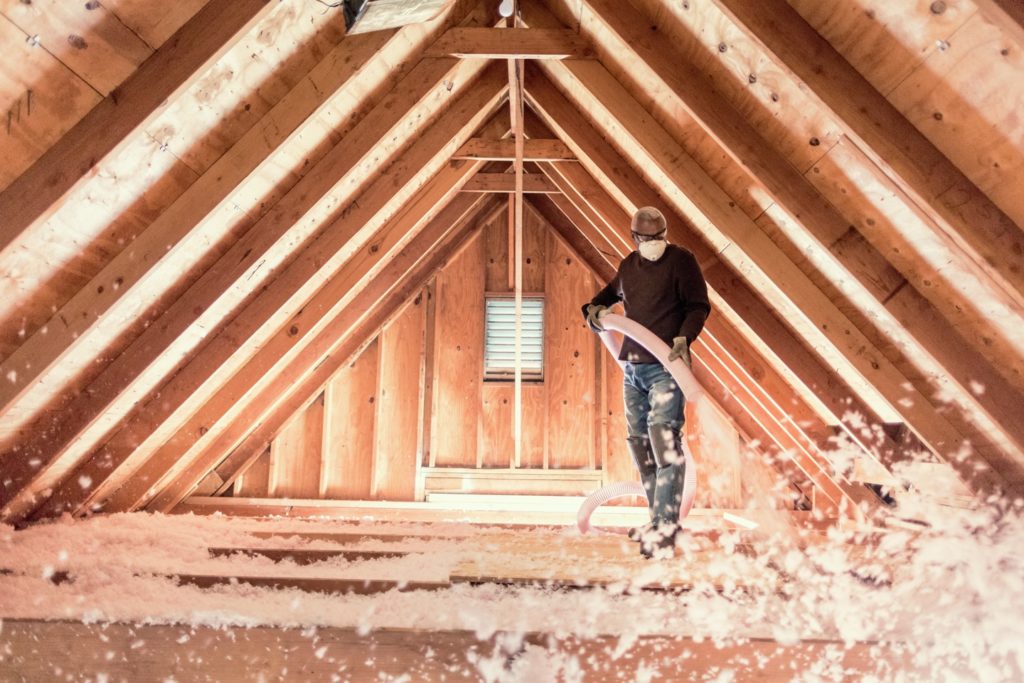
Home insulation is important as it helps to maintain a desired temperature in your home throughout the year and safeguards the home against excess heat in summer and cold in winter, and prevents noise pollution. A well-insulated home is extremely energy efficient and will need little heating and cooling.
The amount of money that you will save through home insulation will largely depend on the factors like the type of insulation materials and the size of your home. The age of the home will also determine whether you will incorporate more or fewer insulation measures. Insulation is a sensible investment that will reduce your energy consumption and help you save on energy bills over time.
Modern homes are usually built to good insulation standards, but old houses need lots of work with regards to insulation. There are many options today that homeowners can use to enhance their home’s energy efficiency. You need to have integral insulation that will help to keep heat inside the home because heat is usually lost in all directions during cold weather. You can opt to insulate your walls, windows, doors, floors, and roof. Insulation professionals can help you find simple but effective ways of insulating your home to help prevent heat loss and lower your energy bills.
Types of Insulation

To select the right insulation for your house from the different types of insulation available on the market today, you need to know where you want the insulation materials installed and the R-value that you wish the installation will achieve. Other important considerations include life cycle costs, ease of installation, indoor air quality influences, and the recycled content. Some insulation techniques and materials necessitate professional installation, while others can easily be handled by homeowners.
Insulation Materials

Insulation materials are available from heavy fiber materials like wool, rock and slag, cellulose, fiberglass and natural fibers to sleek foils and rigid foam boards. Heavy insulation materials resist both conductive and convective heat flow in a building cavity. Conversely, the rigid foam boards tend to trap air and gas to resist conductive heat flow. Reflective insulation systems and radiant barriers have highly reflective foils that reflect radiant heat away from the living spaces and this makes them ideal in cooling climates. There are also less common insulation materials like cementitious foam, phenolic foams, perlite, and vermiculite.
How much insulation is necessary and what areas should be insulated
The local building codes can help you to answer these questions. It is important to install insulation in attic floors, in the exterior walls, and the wall between the living space and the garage. The wall sheathing which is a material that is placed between the cladding material like brick, stucco or siding and the exterior wall should also be insulated. In some areas, the local building codes necessitate the insulation of the slab and the foundation walls.
There are some parts of the house that must be insulated properly to ensure energy efficiency is enhanced. They include the following:
- The attic is the first area that should be insulated. Fiberglass and cellulose are perfect for insulating the attic.
- Exterior and interior Walls. Rigid boards are ideal for insulating the exterior walls along with vapor barrier. Foam, fiberglass batts, and cellulose can help to insulate the interior walls.
- Floors also require adequate insulation. Traditional fiberglass batts, and rigid foam boards work best for insulating floors.
- Crawl Spaces. These are simply the raised areas underneath the home where your building team gains access to electrical and plumbing works. The best insulation material for crawl spaces is fiberglass although foam and cellulose can also be used.
- Basement. If your property has a basement, it should also be insulated to prevent heat loss. Fiberglass and rigid boards are perfect for the basement. You can also use other insulation materials like batt insulation or rigid foam insulation. Always inquire from your home builder about the choices that you can use on your basement.
Is Planning Permission Necessary For Insulation Work?

In most insulation projects, planning permission is not necessary. The exceptions include external wall insulation and some areas that have conservation schemes or glazing. Even if planning permission is not necessary, building regulations may apply. Therefore, it is always best to confirm with the building control department in your local council. This will ensure that whatever you do is within the law.
Insulation is Accessible and Affordable
Installing a solar PV system may cost €30,000 or even more while the cost of upgrading your basement and attic insulation in a typical home is about €6,000 or less. Furthermore, an insulation upgrade usually pays for itself over time. Almost all buildings are strong candidates for an insulation upgrade and homeowners can easily find insulation material irrespective of where they live. Insulating your home is a one-time improvement that will last for the entire life of your house and it will never require maintenance or wear out. When you install the right insulation in your home, it will still perform well after 50 years just as it does immediately after installation.
Conclusion
Unless your residential home was specially built for energy efficiency, you can lower your energy bills by adding more insulation. Many older homes tend to have poor insulation when compared to houses that have been constructed recently. However, adding insulation to your new home can also pay for itself within a few years.
To find out whether your home needs additional insulation, you will have to confirm the amount of insulation that is currently in your home and where it is located. Carrying out a detailed energy assessment will identify areas of the home that need proper insulation. You should also work with qualified insulation contractors because they understand the various types of insulation and will provide the necessary “R-Value” or thermal protection to your home.
